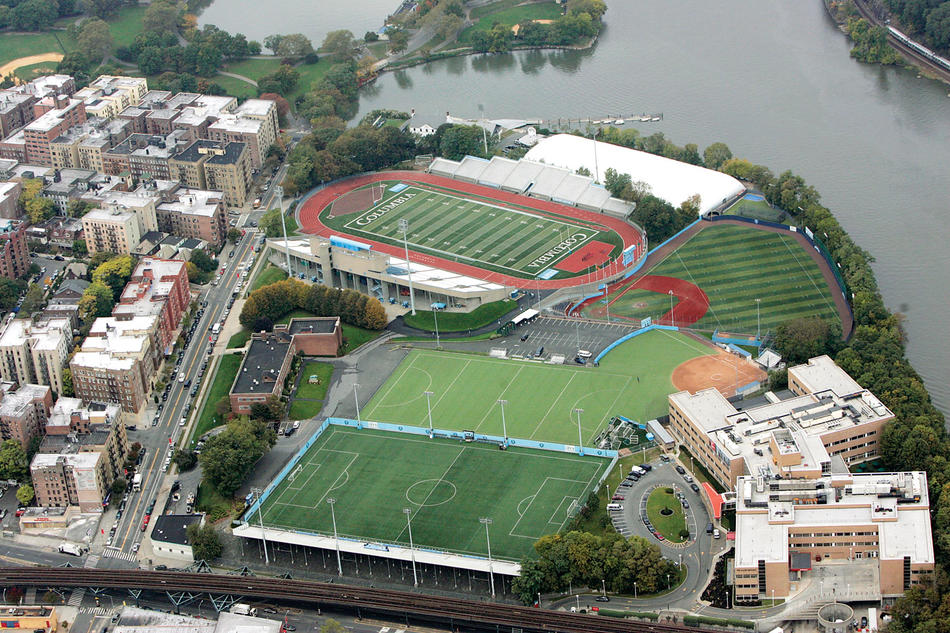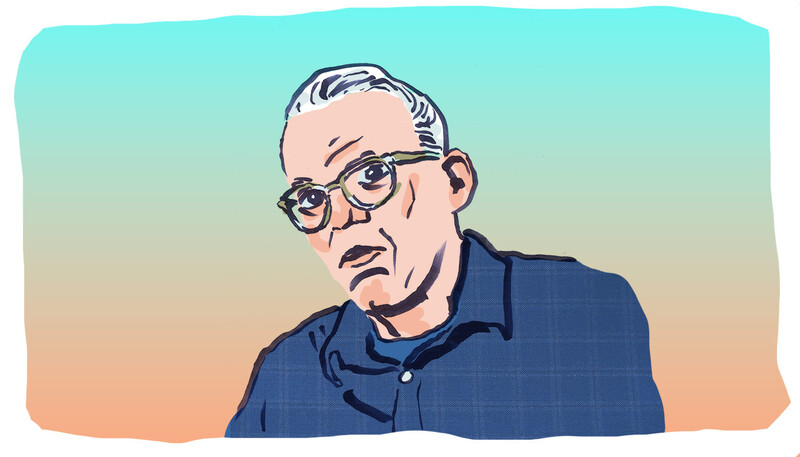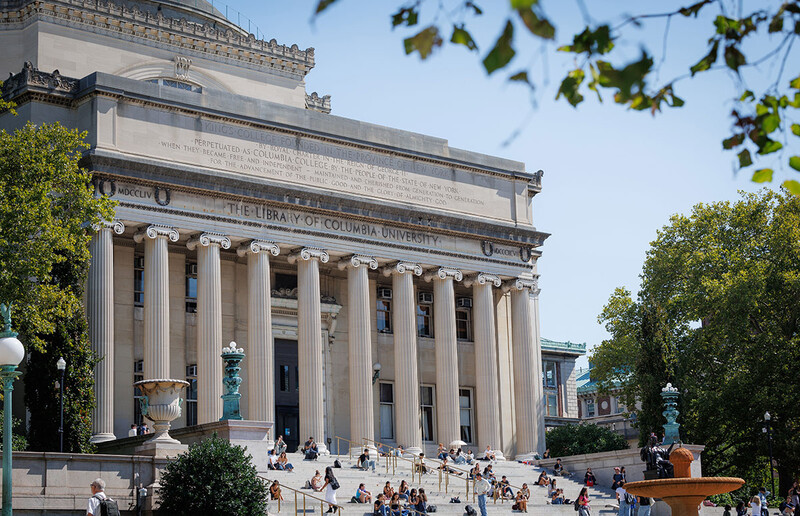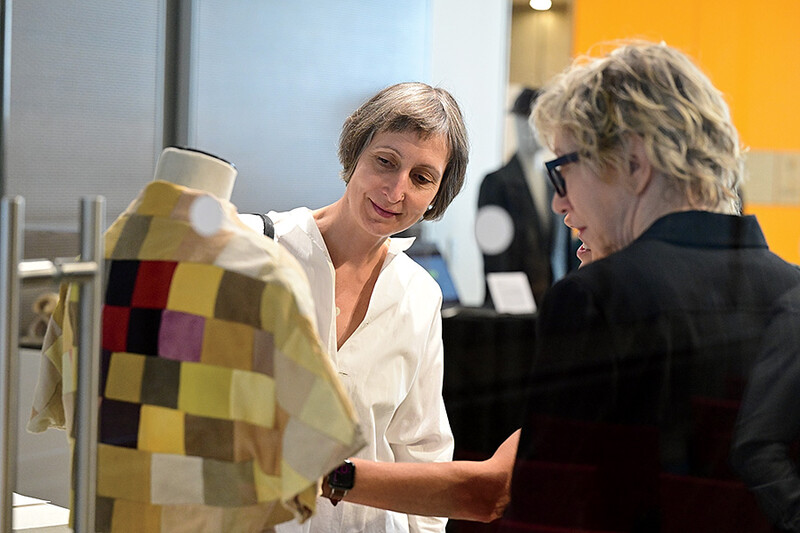The New York City Council recently granted Columbia final approval to construct a five-story, 47,700-square-foot sports center at its Baker Athletics Complex on the northern tip of Manhattan. The new center will serve as a hub for student-athletes and coaches who practice and compete at Baker, which is the University’s main outdoor sports compound. It is scheduled to be complete in late 2012.
The Campbell Sports Center, named in honor of University trustee chairman and former Lions head football coach William V. Campbell ’62CC, ’64TC, will include a strength-and-conditioning center, coaches’ offices, team meeting rooms, an auditorium, and a lounge and study area. It will be located at 218th Street and Broadway, at the southeastern corner of the Baker Athletics Complex, where Columbia until recently had a maintenance garage.
The new center will dramatically improve the day-to-day lives of students and coaches, says Columbia athletics director M. Dianne Murphy. Currently, there are few indoor spaces at Baker where coaches can hold office hours, teams can gather, or students can find desks or computers. Athletes are often seen sitting on duffel bags in the grass before practice, doing homework.
“Soon, when our students travel up to Baker, they’ll be able to lift weights, watch films with their coach, do a little studying, and gather in the lounge,” says Murphy. “It will make their lives a lot easier and also create a sense of community.”
In recent years, Columbia has made several upgrades to the Baker facilities. The football, baseball, softball, and soccer fields have been resurfaced, as have the tennis courts, and a new field hockey venue created. The two-story Chrystie Field House, which consists mainly of locker rooms, has been renovated with state-of-the-art training and sports-medicine equipment. But the 60-year-old building has only two small offi ces and a tiny student lounge.
“Space is a major issue, because our athletics programs have grown significantly over the past 25 years,” says Murphy. “The facilities at Baker were built at a time when Columbia College enrolled only men and had just seven or eight sports teams. Now we have 700 student-athletes who compete in 31 varsity sports, with both men’s and women’s teams using the facilities. We’re still the smallest athletics department in the Ivy League, yet we’re totally maxed out.”
The construction of the Campbell Sports Center will also help relieve overcrowding at the Dodge Fitness Center on the Morningside Heights campus. All of Columbia’s sports coaches are now situated at Dodge; some are forced to share offices on rotating schedules. Many of the coaches will move to the new sports center, freeing up office space and meeting rooms for Lions teams that compete at Dodge, such as fencing, wrestling, swimming and diving, basketball, and volleyball.
“Everybody on campus will benefit, since Dodge also serves as the main fitness facility for the general student body,” says Murphy. “Dodge needs major renovations, but this is a first step toward creating more space for wellness and recreational activities there.”
Architect providing “wow” factor
The Campbell Sports Center is being designed by Steven Holl, a Columbia professor widely regarded as one of America’s leading architects. He created MIT’s honeycomb-like Simmons Hall in Cambridge, Mass., the gently curving Kiasma Museum in Helsinki, and a knotty cluster of residential towers connected by sky bridges called Linked Hybrid in Beijing. The Campbell Sports Center, an aluminum-clad building with walkways zigzagging up its southern facade, will be Holl’s first building in New York City. It will feature numerous eco-friendly building and design elements.
“It’s a bold structure that makes a serious statement about our athletics program,” says Murphy. “It’s certainly going to provide a ‘wow’ factor that will help our coaches in their recruiting.”
Columbia aims to raise approximately $55 million for the construction of the Campbell Sports Center; alumni and friends of the University so far have committed about $34 million for this purpose. The center is one of the main elements of the ongoing $100 million fundraising campaign for Columbia athletics, for which $63 million has been raised. Other campaign priorities include endowments for coaching and administrative positions, support for regular sports–team operations, and the renovation of a tennis clubhouse.
According to President Lee C. Bollinger, the naming of the sports center will honor William V. Campbell’s lifelong commitment to the University. Campbell was the captain of the 1961 football team that shared the Ivy League championship with Harvard, and he coached the Lions from 1974 to 1979. Fortune magazine has called Campbell, the former CEO and now chairman of financial-software company Intuit, the “secret coach” of Silicon Valley for his mentoring of executives at other companies such as Apple and Google. Campbell is known for his progressive and employee-friendly leadership approach, including his recruitment of women executives. He has led the Columbia Board of Trustees since 2005.
“Bill Campbell’s passion for athletics and for the University is second to none,” says Bollinger. “As a football player, head coach, devoted alumnus, and now chair of the University Trustees, Bill’s leadership has meant, and continues to mean, so much to Columbia. It is truly fitting that we name our new sports center after him.”
Wildlife preserve on the Harlem
As part of the project, Columbia is also creating a small public park on the western edge of the Baker complex, at 218th Street and Indian Road. The new park, called Boathouse Marsh, will overlook scenic wetlands in an inlet of the Harlem River. Columbia has committed to restore and preserve the wetlands, which are a native habitat of wading birds such as the great blue heron and snowy egret; leopard frogs; ribbed mussels; and other wildlife that has largely disappeared from the Manhattan waterfront. Park visitors will be able to walk amid lush water gardens on a boardwalk that hugs the marsh’s perimeter; a nearby lawn will be landscaped with new trees, paths, and benches.
The park is being designed by James Corner Field Operations, the landscape architecture company that created the High Line aerial greenway in Manhattan’s Chelsea neighborhood. It is scheduled to open next year.
“This is going to be a beautiful place for families to come and enjoy the waterfront where previously there was no access,” says La-Verna Fountain, Columbia’s associate vice president for construction business services and communications. “We also have plans for Columbia faculty to involve local schoolchildren in the wetland restoration and in the monitoring of new habitat areas.”




